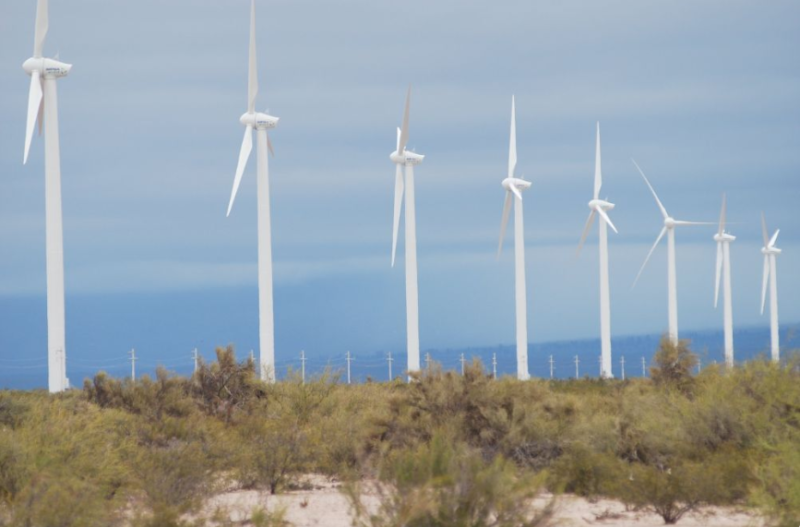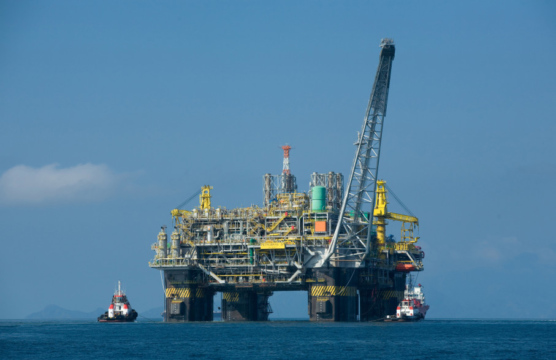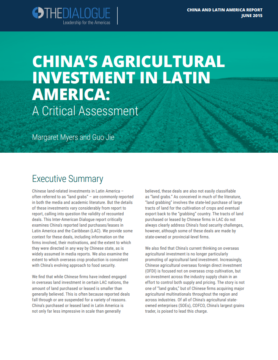The Nationalism of Cristina Fernández de Kirchner
Argentine President Cristina Fernández has increased her appeals to nationalist sentiment to build domestic political support.
A Publication of The Dialogue
Argentina will launch a third round of tenders for 400 megawatts of clean energy projects in October as the government seeks to diversify projects that use existing medium-voltage networks. Argentina is on track to have 20 percent of its energy come from renewable energy sources by 2025, according to Energy Minister Javier Iguacel. What is the Argentine government doing to advance its clean energy ambitions, and what more should it do? Is the private sector on board with the government’s plans? Will Argentina reach its renewable energy goal by 2025?
Doris Rodríguez, partner at Hunton Andrews Kurth LLP and Gonzalo Ariel Viña, associate at Beccar Varela: “Argentina’s enactment of law No. 27191 in October 2015, which set the goal of having 20 percent of Argentina’s electricity consumption come from renewable energy sources by 2025, was the pivotal step in jump-starting Argentina’s renewable energy development. This law led to the implementation of the very successful RenovAr bidding rounds—1, 1.5 and 2—which were very well received by the private sector and which awarded more power-purchase agreements per round than expected. Moreover, the implementation of the Renewable Energy Term Market (MATER), allowing renewable energy generators and large users to trade renewable energy, has also been a step in the right direction for Argentina. Since its inception last year, 44 projects have registered to operate in MATER, and 42 large users have requested access. The private sector also welcomed MATER. Additionally, the government will soon issue regulations under the Distributed Generation Act No. 27424 (December 2017), aimed at decentralizing the generation market in favor of increasing the involvement of the private sector as potential producers (and consumers) of self-generated renewable energy. Given the government’s notable efforts plus the private sector’s response, Argentina appears to be on track to reach its goal. However, Argentina must also be mindful of existing transmission constraints and the timing of improvements. The tenders to build high-voltage transmission lines to increase transmission capacity under public-private partnerships must also be a priority for Argentina to assure its success in reaching its 20 percent renewable energy goal.”
Carlos St. James, board member of the Latin American and Caribbean Council on Renewable Energy (LAC-CORE): “Argentina’s government-led RenovAr renewables program is ambitious, well-structured and achievable—in contrast to the previous government’s irrationally optimistic and poorly structured GENREN program. In Argentina, however, the usual impediment to success is politics. The 2025 targets are viable and necessary: Argentina has a need for additional power capacity due to past underinvestment. It also has some of the best solar and wind resources of any country in the world. All stakeholders but one are present and looking to do business: public sector support in the form of a sound regulatory framework; investors; technology providers; project developers; technical advisory firms; long-term off-take agreements in hard currency (with World Bank support no less); and credible industry institutions allowing the sector to speak as one voice (in the form of, among others, the Argentine Renewable Energies Chamber, CADER, which I founded and presided over in its early years). Unfortunately, the missing stakeholder is one that is critical to success: debt financing. Domestic commercial banks are unable to structure long-term financing, while foreign commercial banks remain skeptical about the country’s long-term commitment to economic stability. So, the projects getting built are mostly from one of two situations: those where the sponsor has access to international financing because of a strong balance sheet or those that use export credit agency guarantees. But these two remain insufficient at present to achieve the targets the government set. Meanwhile, the backlog of perfectly viable projects accumulates—and job creation lags.”
Regina Ranieri, business development manager and director of the renewable energy development and finance executive program at UL Renewables in Argentina: “Argentina is working to have 20 percent renewable energy by 2025. It started at 2.7 percent renewable energy, or 400 megawatts, and hopes to have 10 gigawatts within a 10-year timeframe. The positive side includes satisfactory bidding processes (RenovAr and MATER), long-term projects with the government (power purchase agreements for 20 years) and businesses interested in private contracts for renewable provision and self-consumption. We expect four more gigawatts of projects currently at different stages of development by December, most of them driven by local businesses. However, the economic crisis the country is suffering has boosted the cost of capital. In next year’s budget, as required by the IMF, Argentina will have to reduce investments in public works, which is necessary for the construction of new high voltage lines (investment in electric transport was included in a public-private partnership process). In this context, Mini-Ren (projects of up to 10 megawatts) will have to take advantage of the existing infrastructure and, to reach 20 percent renewable energy, Argentina will have to incentivize distributed generation—where one gigawatt of new energy is expected—and promote private investment in transport lines or decide to replace thermal power plants.”
Roberto Carnicer, director of energy, and Oscar Medina, professor of electric energy, both at Universidad Austral in Buenos Aires: “We can summarize the current situation of renewable energy in Argentina by the fact that the contracts awarded in the RenovAr 1 and 1.5 auctions in 2016 and RenovAr 2 in 2017 total 4,467 megawatts. Despite having very attractive prices in the RenovAr 2 auction, in comparison to other renewable energy auctions in the region (including Chile, Peru and Uruguay), and competitive even with prices of thermal generation and natural gas, it remains that 41.5 percent of the total potential has not closed financing deals. Five projects totaling 307 megawatts (6.8 percent) are currently operating, and projects of an additional 1,144 megawatts (25.6 percent) are under construction and will be incorporated by the end of this year and through next year. Moreover, projects totaling 1,158 megawatts (25.6 percent) finalized financing and will begin operating in 2020, and 1,858 megawatts (41.5 percent) in projects could finalize their financing in the coming months to begin operating between 2021 and 2022. This is a delay in the scheduled timeframe, due to the country’s macroeconomy, although the government has tried to shield the projects from risk and place them in the international capital market. The development of the deal with the IMF and the government’s austerity measures will allow us to return to the set targets once the storm has passed. The government has reiterated that it will not under any circumstance fail to meet the commitments it made. RenovAr 3 is aimed at promoting small and medium-sized renewable generation projects to take advantage of the country’s distribution network capacity. This type of project will take advantage of existing infrastructure and will be implemented without a problem. Argentina has established achieving 20 percent renewable energy by 2025 as its goal. The international market should look at the objectives that have been met in the first two years, the intention and efforts, and consider the country’s starting point. What’s important is the high standards Argentina has set for itself.”
Marcelo Álvarez, president of Cámara Argentina de Energías Renovables (CADER): “Argentina will achieve its goal of 20 percent renewable energy in its electricity matrix by 2025. It will probably not achieve the first two-year goals because there are many projects being built. The main barriers right now are: financial support (high interest or short-term paybacks), the macroeconomic state of Argentina and the lack of infrastructure to reduce cost and time for building solar and wind plants. To build big plants in terms of power and utility scale, Argentina needs to extend the national high-voltage grid. Two new niche markets are growing. More than one gigawatt is already signed with MATER. A distributed renewable energy federal law is being drafted this year. It is a net-billing model with fiscal incentives and financial support to reduce the payback time for residential, commercial and industrial prosumers. It is a law for self-consumption with the possibility of selling the leftover electricity. The government must use more available grid in medium voltage and to accelerate the construction of new ones in high voltage to increase the delivery capacity of renewable energy projects as soon as possible.”
The Latin America Energy Advisor features Q&A with leaders in politics, economics, and finance every week. The publication is available to members of the Dialogue's Corporate Program and others by subscription.
Argentine President Cristina Fernández has increased her appeals to nationalist sentiment to build domestic political support.
Comparatively high rates of energy use in China and Brazil have led to investment in many forms of energy, including renewables.
China is looking for new agricultural investment opportunities in Latin America, but not necessarily for large tracts of land.
 File Photo: Argentine Government.
File Photo: Argentine Government.

